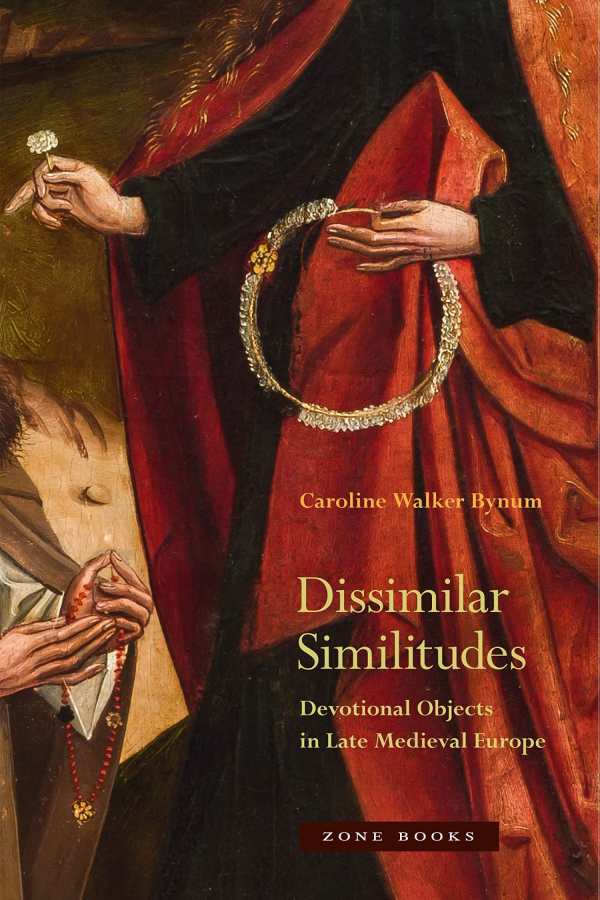Dissimilar Similitudes
Devotional Objects in Late Medieval Europe
The erudite, illustrated essays of Dissimilar Similitudes concern art, history, religion, and culture in late medieval Europe—in particular, how devotional objects and images were viewed by worshippers. Some challenge traditional interpretations of how such items were used.
Thoughtful as they examine how medieval Europeans viewed life and the afterlife, Caroline Walker Bynum’s essays stress that morphologically similar objects can’t be assumed to share religious and cultural meaning. They also underscore that devout medieval worshippers would have viewed ordinary items as imbued with religious power based on mathematical or visual similarities, and that such folk objects should be reexamined with these understandings of “dissimilar similitude.”
Texts about religious practices were written for clerics and educated elites, Bynum shares, so fresh interpretations of holy objects are imperative to understanding their use by the larger, illiterate populace. She is rigorous in her analyses of objects including nun’s crowns, elaborate sculptures of cradles and beds, and intriguing depictions of Jesus’s feet during the ascension. One chapter compares Christian and Hindu sacred processional figures and enhances Bynum’s tenet that similar morphologies of holy items should not be interpreted as having similar religious meanings.
Most riveting is an essay about the ugly history of anti-Jewish objects in medieval German churches. Bynum relays the legends and history of these hate-filled images, which is largely unknown to Anglophone audiences, and discusses how modern historians, and the churches that own such objectionable items, should handle them. Questions of memorialization, historical cleansing, and appropriate display are all handled with sensitivity.
Dissimilar Similitudes glides through history and iconography, revisiting the assumptions of scholars and decoding the intricate meanings of holy objects. Its probing essays are original, revisionist interpretations that illuminate avenues for further study.
Reviewed by
Rachel Jagareski
Disclosure: This article is not an endorsement, but a review. The publisher of this book provided free copies of the book to have their book reviewed by a professional reviewer. No fee was paid by the publisher for this review. Foreword Reviews only recommends books that we love. Foreword Magazine, Inc. is disclosing this in accordance with the Federal Trade Commission’s 16 CFR, Part 255.

